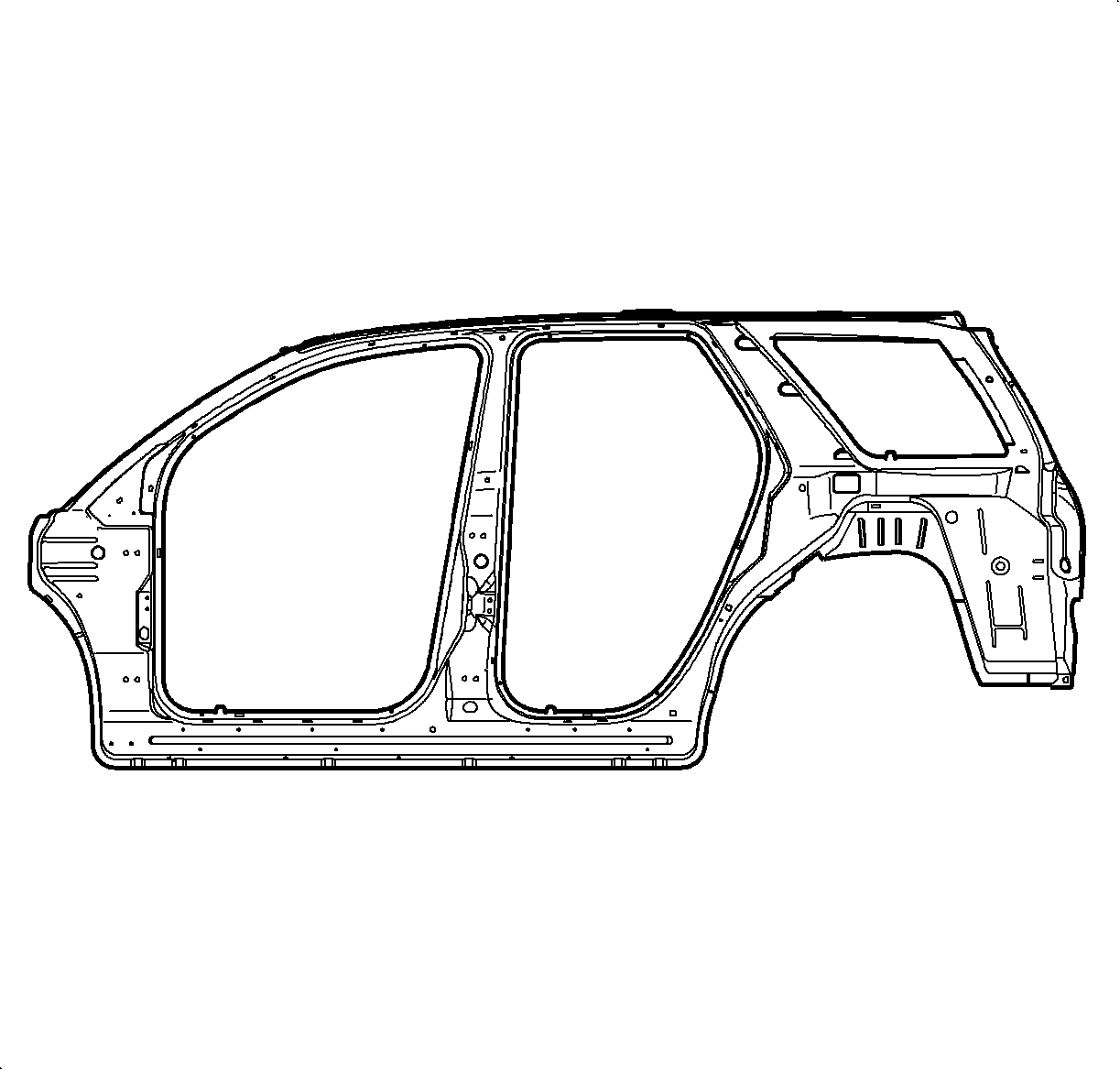For 1990-2009 cars only
Removal Procedure
- Disable the SIR system. Refer to SIR Disabling and Enabling in SIR.
- Disconnect the negative battery cable. Refer to Battery Negative Cable Disconnection and Connection in Engine Electrical.
- Remove all related panels and components.
- Repair as much of the damage as possible to factory specifications. Refer to Dimensions - Body .
- Note the location and remove the sealers and anti-corrosion materials from the repair area, as necessary. Refer to Anti-Corrosion Treatment and Repair in Paint and Coatings.
- Locate and drill out all factory welds, for the portion of the body side that will be replaced. Note the number and location of the welds for installation of the body side panel.
- Remove the damaged section of the body side panel.
Caution: Refer to Approved Equipment for Collision Repair Caution in the Preface section.

Important: Do not damage any inner panels or reinforcements.
Installation Procedure
- The body side can be replaced as a complete piece or in various sections specified in the illustration and the text.
- Measure 131 mm (5.2 in) from the slot located above the sectioning line (1). Use a 50 mm (2 in) backing plate.
- Section at the die mark located on the door frame weather strip flange (2). Use a 50 mm (2 in) backing plate.
- Measure down 190 mm (7.5 in) from the body line (3). Use a 50 mm (2 in) backing plate.
- Section at the die mark located on the door frame weather strip flange (4). Use a 50 mm (2 in) backing plate.
- Measure 50 mm (2 in) down from the bottom edge of the large slot (5). Use a 50 mm (2 in) backing plate.
- Measure 115 mm (4.5 in) upward from the top edge of the slot located at the bottom of the pillar (6).
- Section at the die mark (7). Use a 50 mm (2 in) backing plate.
- Sectioning can be done from the down turned flange to 100 mm (4 in) rearward of the flange (8). Use the 100 mm (4 in) backing plate for the lower half of the rocker and the existing reinforcement for the backing of the upper half.
- Section can be done from the die mark located on the door frame weather strip flange (9) to 300 mm (12 in) rearward of the die mark. Use 100 mm (4 in) backing plate for the lower half of the rocker and the existing reinforcement for the backing of the upper half.
- Drill 8 mm (5/16 in) plug weld holes in the service part, as necessary, in the locations noted from the original panel.
- Prepare all mating surfaces, as necessary.
- Apply 3M Weld-Thru Coating P/N 05916 or equivalent to all mating surfaces.
- Position the body side panel section to the vehicle using 3-dimensional measuring equipment. Clamp the body side panel into place.
- Plug weld accordingly.
- Clean and prepare all welded surfaces.
- Apply the sealers and anti-corrosion materials to the repair area, as necessary. Refer to Anti-Corrosion Treatment and Repair in Paint and Coatings.
- Paint the repair area. Refer to Basecoat/Clearcoat Paint Systems in Paint and Coatings.
- Install all related panels and components.
- Connect the negative battery cable. Refer to Battery Negative Cable Disconnection and Connection in Engine Electrical.
- Enable the SIR system. Refer to SIR Disabling and Enabling in SIR.

The following are approved sectioning locations for the body side:
Important: All backing plates should be made from an undamaged portion of original panel or new service part.
Important: If the location of the original plug weld holes cannot be determined, space the plug weld holes every 40 mm (1 ½ in) apart.
Some panels may have structural weld-thru adhesive. It is necessary to replace the weld-thru adhesive with an additional spot weld between each factory spot weld.